Birth 
“Public figures cannot afford private life”, Jawaharlal Nehru is reported to have lamented once. But there was one figure in Indian politics in the recent past who willingly merged his private life into his public life. The former Chief Minister of Tamilnadu and All-India Congress President, K. Kamaraj was one such personality. July 15, 2003 marks his birth centenary. A life-long bachelor, this freedom fighter had only aspired for his mother-land’s freedom from foreign rule and to serve its people afterwards. Kamraj’s life story had been stranger than fiction for its unbelievable incidents and turn of events. Almost an illiterate with no formal education and born in a poor family in a remote village, he rose to great heights of eminence in the political arena.
K. Kamaraj was born on July 15,1903 to the couple Kumarasamy and Sivakami in Virudhunagar, Tamilnadu, in the southern-most part of India. His father Kumarasamy had a small coconut shop to support his family. While Kamaraj was studying in the primary school, the family was struck with a misfortune. His father, the only breadwinner of the family, succumbed to a massive heart attack. This put an end to the education of Kamaraj. He had to take up all kinds of odd jobs including that of a street vendor to support his widowed mother and sister. The Independence struggle was in full swing in the country at that time. Kamraj was eager to contribute his mite to the freedom movement pioneered by Mahatma Gandhi. Inspired by the patriotic leader Satyamurthi’s fiery oratory against British atrocities, Kamaraj plunged headlong into the movement. From then on there was no looking back for him. He became an able organiser in mobilizing people for public meetings addressed by patriots. Appreciating his skill, Satyamurthi took him under his fold. In due course, Kamaraj, by his selfless devotion, rose in stature. Starting as Satyamurthi’s personal assistant he ultimately rose to become the President of the Indian National Congress.
Education
Unfortunately his father died within a year of Kamaraj’s enrollment in school. Kamaraj’s mother sold all jewelry except her earrings and deposited the money with a local merchant and cared for the entire family on the monthly interest that the money earned.
Kamaraj was not a good student in school and dropped out when he was in the sixth grade. When he entered mainstream public life he felt handicapped and realized the importance of a good education. He educated himself during his periods of imprisonment and even learned English from his co-worker.
Kamaraj joined as an apprentice in his maternal uncle Karuppiah’s cloth shop after dropping out of school. He would slip out from the shop to join processions and attend public meetings addressed by orators like Dr. Varadarajulu Naidu and George Joseph. His relatives frowned upon Kamaraj ‘s budding interest in politics. They sent him to Thiruvananthapuram to work at another uncle’s timer shop. Even there Kamaraj participated in the Vaikom Satyagraha led by George Joseph, of the Congress, against the atrocities of the higher caste Hindus on the Harijans. His elders had him called back home and pressured him to marry. Kamaraj resolutely refused to bow to the dictates of his elders.
Habits
Kamaraj proved himself as Chief of all the C.Ms in India. He was the first C.M. who was in the post for a long period of 9 years . ie. from 1954 to 1963 unless he resigned the post voluntarily he would have continued to be the C.M
He did his duty boldly and patiently without discourage. He listened the views of the opposite parties. He easily solved the political problems.
He attracted every one to his side. He listened others without himself speaking . He never concentrated on his food or dress.
He honored the news reporters ,. He affectionately moved with photographers. He never angered with anyone. Replied letters immediately. Listened the grievances and solved them immediately. He gave more data. Understood the problems easily and keenly studied the files. He did not like luxury , flattering and advertisement. He was very simple . He never uttered harsh words. Because of these habits he ornamented the C.M’s post . It would not be an exaggeration that the post got honored through him.
The words of W.R.S.Sathyanathan who was a high official were the evidence of the administration of Kamaraj. He served as Chief Secretary to the state under Kamaraj. He said that Kamaraj’s efficiency made him to respect him. Kamaraj was fast and clean in finalizing the things. He could judge people in a lightning speed who came to meet him.
He could solve even a sophisticated big problem within seconds. He approaches the problem directly.
Judgment would be very clean. He detected the problems in an astonishing way. He used to read the files kept for his advice completely, then only he used to decide.
There was no village in our state which his feet never touched. Whatever the place whether Mountain area or river side he could explain with evidences about the climate of that region.
Politics
Kamaraj was content for years to remain a rank and file Congress volunteer, working hard for the cause of the freedom movement, unmindful of his personal comfort or career. He was eighteen when he responded to the call of Gandhiji for non-cooperation with the British. He carried on propaganda in the villages, raised funds for Congress work and took a leading part in organising meetings S. At twenty he was picked up by Satyamurthy, one of the greatest orators and a leading figure of the Tamilnadu Congress Committee who was to be Kamaraj’s political guru. In April 1930, Kamaraj joined the Salt Satyagraha Movement at Vedaranyam and was sentenced to two years his first term in prison. Jail-going had become a part of his career and in all he went to prison six times and spent more than 3,000 days in British Jails. Bachelor Kamaraj was forty-four when India became free.
Kamaraj was elected President of the Tamilnad Congress Committee in February 1940. He held that post till 1954. He was in the Working Committee of the AICC from 1947 till the Congress split in 1969, either as a member or as a special invitee. Kamaraj was elected to the Madras Legislative Assembly in 1937 unopposed. He was again elected to it in 1946. He was also elected to the Constituent Assembly of India in 1946, and later to Parliament in 1952. He became Chief Minister of Madras in 1954. He was perhaps the first non-English knowing Chief Minister in India. But it was during the nine years of his administration that Tamilnadu came to be known as one of the best administered States in India. In 1963 he suggested to Nehru that senior Congress leaders should leave ministerial posts to take up organisational work. This suggestion came to be known as the ‘Kamaraj Plan’, which was designed primarily to dispel from the minds of Congressmen the lure for power, creating in its place a dedicated attachment to the objectives and policies of the organisation. The plan was approved by the Congress Working Committee and was implemented within two months. Six Chief Ministers and six Union Ministers resigned under the Plan. Kamaraj was elected President, Indian National Congress, on October 9, 1963. Twice he played a leading role in choosing the Prime Minister of India.
His defeat in Virudhunagar in 1967 considerably undermined his prestige. It was even said that he was a much disillusioned man. But the landslide victory at Nagercoil revived his political stature. However, the split in the Congress in 1969 (he remained in the Organisation Congress) and the General Elections of 1971 resulted in a set-back to his political prestige and authority. He continued to work quietly among the masses until the last. He was honoured posthumously by the award of Bharat Ratna.
Daily Life
Right from his young age Kamaraj never liked luxurious life . He adopted simplicity in anything. His food , dress and speech were very simple. But he was not a miser. When he was C.M. he used to spend most of his salary for the poor who came to him for help.
A cup of coffee in the morning , lunch at 11.00 a.m. evening a cup of coffee and 2 Idlies and a cup of milk at supper were his daily food. His lunch was a simple vegetarian meal. Occasionally an egg would be added with his lunch. He never celebrated Hindu festivals. He used to get up from his bed at 7.am
He gave interview to all whoever came to meet him. He never sent anyone without seeing . He helped all as far as possible. He never helped anyone on the basis of cast or creed. For genuine reasons he never hesitated to help. He used to read books before sleep , some times up to 2′o clock in the mid night . Sometimes he used to discuss serious political problem upto 5 . a.m in the next morning.
He used to have a nap after lunch. Daily he received about 75 letters. But he never replied them .Just helped the needy ones. He never replied the letters from Virudhunagar.He never wounded anybody’s feelings . He moved friendly with everyone without political enmity. He used to get angry at times.
Suppose if anyone confuses him or tried to suppress the fact or telling the same matter repeated he gets annoyed. But that anger remains for a short period only. Later he forgets that and moved normally when he meets them next time.
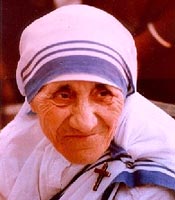 Mother Teresa (August 26, 1910 - September 5, 1997) was a great personality, who did a lot to improvise the social condition of our country. Born on the 27th of August in the year 1910, she was named Agnes Gonxha Bojaxhiu. She belonged to a family of Albanian descent. She was the founder of missionaries of charity. She was actively involved in social work.
Mother Teresa (August 26, 1910 - September 5, 1997) was a great personality, who did a lot to improvise the social condition of our country. Born on the 27th of August in the year 1910, she was named Agnes Gonxha Bojaxhiu. She belonged to a family of Albanian descent. She was the founder of missionaries of charity. She was actively involved in social work.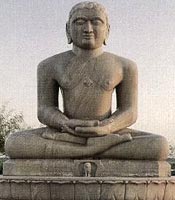 Mahavira (599-527 BC) was the last Jainist Tirthankara. People call Lord Mahavira by different names such as Vira or Viraprabhu, Sanmati, Vardhamana, Ativira and Gnatputra. When it comes to the values of Jainism, Lord Mahavira deserves a special mention, as he was the one to establish the ethics that are ruling the whole Jain community today. Well, in this article, we will provide you with the Lord Mahavira's biography. To know the complete life history of Mahavir Swami, read on…
Mahavira (599-527 BC) was the last Jainist Tirthankara. People call Lord Mahavira by different names such as Vira or Viraprabhu, Sanmati, Vardhamana, Ativira and Gnatputra. When it comes to the values of Jainism, Lord Mahavira deserves a special mention, as he was the one to establish the ethics that are ruling the whole Jain community today. Well, in this article, we will provide you with the Lord Mahavira's biography. To know the complete life history of Mahavir Swami, read on…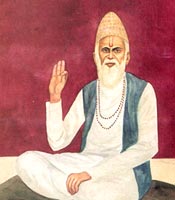 Amongst the several saints that have blessed our country, Kabir Das, the well known mystic poet, deserves a major credit for bringing about a revolution. He was a man of principles and practiced what he preached. People called him by different names like Das, sant, bhakta etc. As Das, he was referred to as the servant of humanity and thus a servant of divinity. Well, in this article, we will provide you with the biography of Kabir, which will enable you to explore the story of Kabir Das. We will tell you some interesting facts about saint Kabirdas.
Amongst the several saints that have blessed our country, Kabir Das, the well known mystic poet, deserves a major credit for bringing about a revolution. He was a man of principles and practiced what he preached. People called him by different names like Das, sant, bhakta etc. As Das, he was referred to as the servant of humanity and thus a servant of divinity. Well, in this article, we will provide you with the biography of Kabir, which will enable you to explore the story of Kabir Das. We will tell you some interesting facts about saint Kabirdas.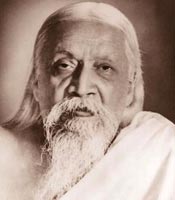 Sri Aurobindo (August 15, 1872-December 5, 1950) was a great scholar, mystical poet, yogi and an aggressive Indian nationalist. He was actively involved in the politics of India. He is well known for his incredible contribution in the freedom struggle of our country. He came up with an entirely new system of spirituality. He called his pathway to spirituality the 'integral yoga.
Sri Aurobindo (August 15, 1872-December 5, 1950) was a great scholar, mystical poet, yogi and an aggressive Indian nationalist. He was actively involved in the politics of India. He is well known for his incredible contribution in the freedom struggle of our country. He came up with an entirely new system of spirituality. He called his pathway to spirituality the 'integral yoga.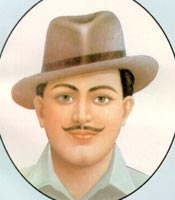 Shaheed Bhagat Singh did not live long. In fact Bhagat Singh was all of 24 years when he was sent to the gallows along with fellow comrades Shivaram Rajguru and Sukhdev Thapar. But during this short span, Bhagat Singh shone like a gleaming meteor in the Indian sky and inspired millions with his heroic battle against the oppressive British regime.
Shaheed Bhagat Singh did not live long. In fact Bhagat Singh was all of 24 years when he was sent to the gallows along with fellow comrades Shivaram Rajguru and Sukhdev Thapar. But during this short span, Bhagat Singh shone like a gleaming meteor in the Indian sky and inspired millions with his heroic battle against the oppressive British regime.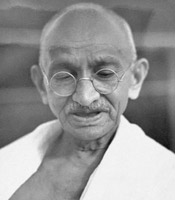 Mahatma Gandhi. 'Father of the Nation' for a country with a billion people. The Mahatma was assassinated by religious zealots more than half a decade ago but his legacy continues in the concepts he pioneered and in the social reforms he initiated. The bespectacled, Khadi-clad image of Mahatma Ghandi is indelibly engraved on the conscience of every Indian and on October 2 every year, on the eve of his birth anniversary, a grateful nation pays homage to this frail-bodied man who had the vision and courage to take on the might of the British Empire.
Mahatma Gandhi. 'Father of the Nation' for a country with a billion people. The Mahatma was assassinated by religious zealots more than half a decade ago but his legacy continues in the concepts he pioneered and in the social reforms he initiated. The bespectacled, Khadi-clad image of Mahatma Ghandi is indelibly engraved on the conscience of every Indian and on October 2 every year, on the eve of his birth anniversary, a grateful nation pays homage to this frail-bodied man who had the vision and courage to take on the might of the British Empire.